Tokyo Food Safety Information Center » Good things to know » Bovine spongiform encephalopathy (BSE) » BSE screening inspections in pictures (Shibaura Meat Sanitary Inspection Station)
BSE screening inspections in pictures (Shibaura Meat Sanitary Inspection Station)
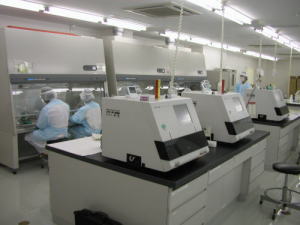
Up to 430 cows per day are processed at the Tokyo Central Wholesale Market Meat Market in Minato, Tokyo.
Each of these cattle undergo slaughter inspection at the Shibaura Meat Sanitary Inspection Station. In addition, cattle aged 48 months and older as well as those animals deemed necessary by a Slaughter Inspector during live inspection are also given BSE screening inspection.
In order to prevent food not suitable for consumption such as due to disease from being released in markets, dressed carcasses and organs, etc., are stored at the Meat Market until inspections at the inspection station are completed.
This page presents pictures of the BSE screening process.
Collection of samples
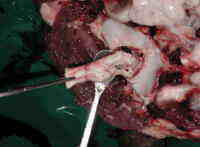
The medulla oblongata, an organ in which the abnormal prions which cause BSE accumulate, is removed and a sample taken using a modified spoon-like tool.
Pre-processing
A fixed amount is removed from the medulla oblongata of each cow. |
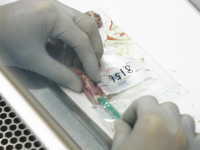 |
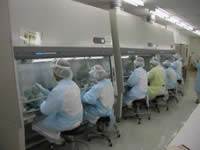 Pre-processing is conducted in safety cabinets like these. |
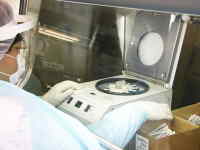 |
A cell homogenizer is used to emulsify the cells. | |
Prion extraction
A reagent is added to the emulsion to break up the normal prions, making it possible to collect only the abnormal prions using a centrifuge.
Abnormal prion detection
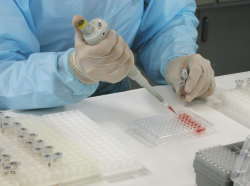
A sample from each cow is carefully injected into the holes of a BSE detection kit plate.
Great care is taken to prevent the wrong sample from being injected in the wrong hole.
A special measurement device is used to confirm the presence of any abnormal prions.
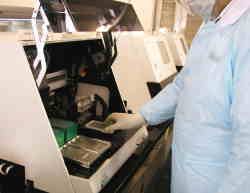
A special measurement device is used to confirm the presence of any abnormal prions.
Determination
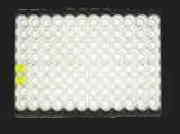
This is what a BSE inspection kit looks like from above.
The two yellow holes on the left serve as a control; any positive samples will turn this same color. The darkness of the color of the sample is measured by a device and quantified to make a determination as to the presence of BSE.
If a positive result is found in the screening inspection, the sample is tested again from the beginning.
If two positive results are received in the inspection, the sample is sent to a government organization for confirmation inspection.
The time required for the inspection is approximately four hours.
Efforts are also made to improve the testing equipment in order to make inspection even faster and more reliable.